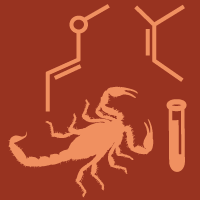Topic Menu
► Topic MenuTopic Editors



Acute Respiratory Viruses Molecular Epidemiology
Topic Information
Dear Colleagues,
The COVID-19 pandemic has introduced the use of the molecular epidemiology of viral pathogens to support public health decision-making on the centre stage. Molecular epidemiology has been already central to influenza surveillance in the last ten years, to derive the influenza vaccine composition and interpret real-world vaccine effectiveness. The molecular epidemiology of other respiratory viruses is emerging as a tool to improve public health, providing insights into virus seasonality, age-related susceptibility, disease severity, viral load and transmission. Virus genome sequencing, combined with metadata, provides evidence not only for outbreak investigations, regional, national and international epidemiological trends, but also for the study of a potential viral escape to natural or vaccine-induced immunity. With the expanding scale of whole-genome pathogen sequencing, new analytical challenges arise regarding how and when to apply these technologies. We are looking for manuscripts on the molecular epidemiology of acute respiratory viruses that report the results of studies conducted prior to and during the current SARS-CoV-2 pandemic and the post-pandemic period. We aim to publish evidence on critical aspects of transmission, geographic dispersion, virulence, immune escape, and the impact on the effectiveness of available vaccines, diagnostics and therapeutics.
Dr. Joan Puig-Barberà
Dr. María Lourdes Guerrero
Prof. Dr. Anna Sominina
Dr. Svetlana V. Trushakova
Dr. F. Xavier López-Labrador
Topic Editors
Keywords
- acute respiratory viruses / epidemiology
- acute respiratory viruses / genetics
- base sequence / genetics
- clinical decision-making
- disease outbreaks
- epidemiological monitoring
- genome, viral / genetics
- humans
- molecular epidemiology / methods
- phylogenetic analyses
- public health
- RNA, viral / genetics
- viral load/methods
- virulence
- whole genome sequencing
Participating Journals
| Journal Name | Impact Factor | CiteScore | Launched Year | First Decision (median) | APC |
|---|---|---|---|---|---|

COVID
|
- | - | 2021 | 16.8 Days | CHF 1000 |

International Journal of Molecular Sciences
|
5.6 | 7.8 | 2000 | 16.3 Days | CHF 2900 |

Pathogens
|
3.7 | 5.1 | 2012 | 16.4 Days | CHF 2700 |

Toxins
|
4.2 | 7.5 | 2009 | 18.4 Days | CHF 2700 |

Viruses
|
4.7 | 7.1 | 2009 | 13.8 Days | CHF 2600 |

MDPI Topics is cooperating with Preprints.org and has built a direct connection between MDPI journals and Preprints.org. Authors are encouraged to enjoy the benefits by posting a preprint at Preprints.org prior to publication:
- Immediately share your ideas ahead of publication and establish your research priority;
- Protect your idea from being stolen with this time-stamped preprint article;
- Enhance the exposure and impact of your research;
- Receive feedback from your peers in advance;
- Have it indexed in Web of Science (Preprint Citation Index), Google Scholar, Crossref, SHARE, PrePubMed, Scilit and Europe PMC.

